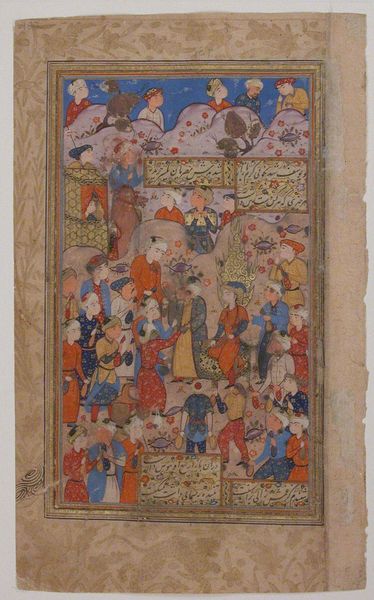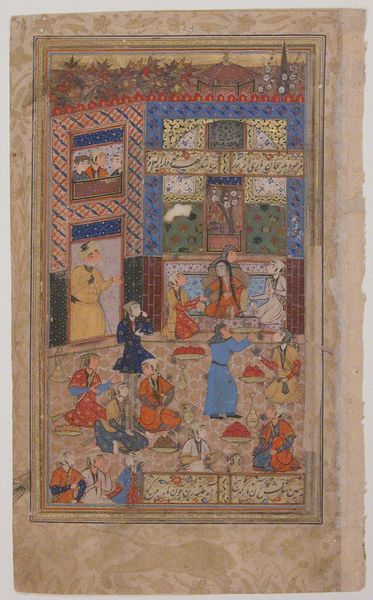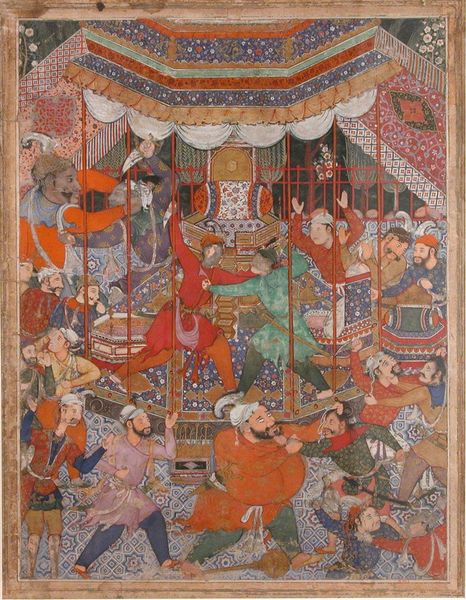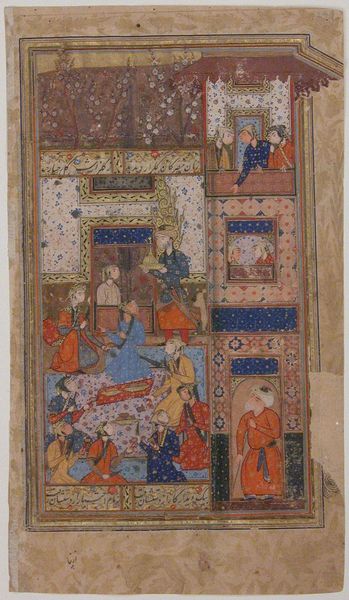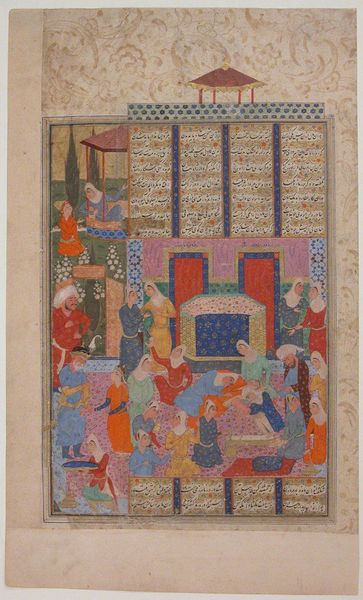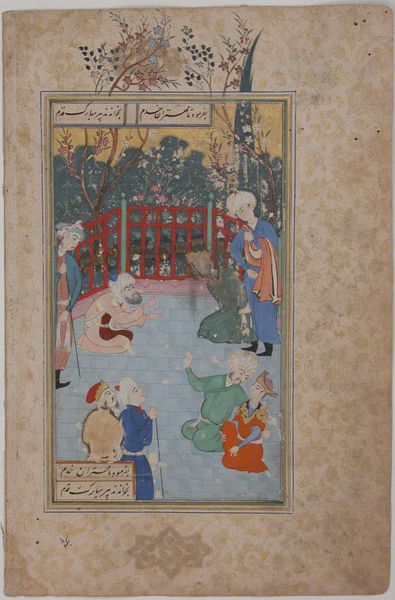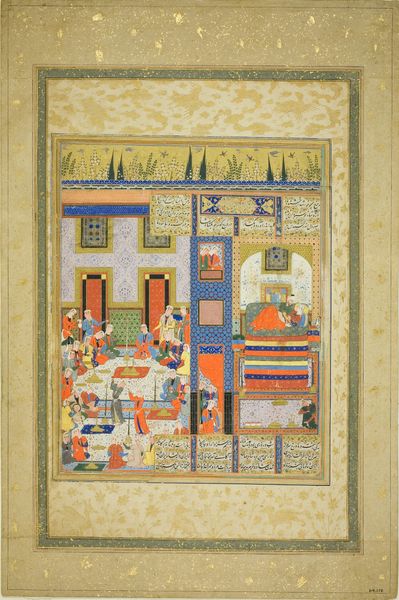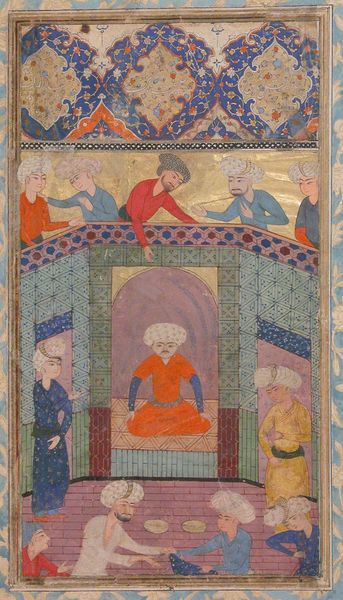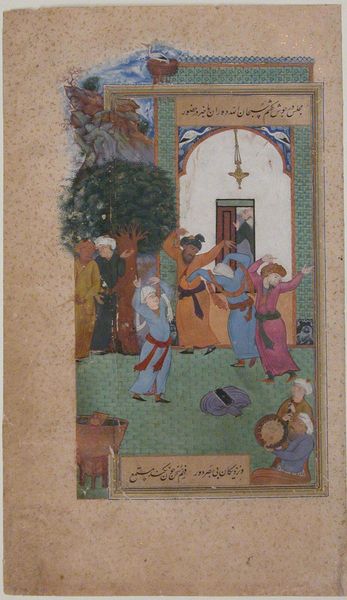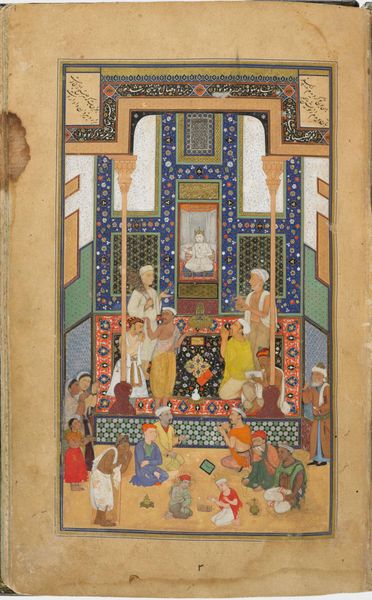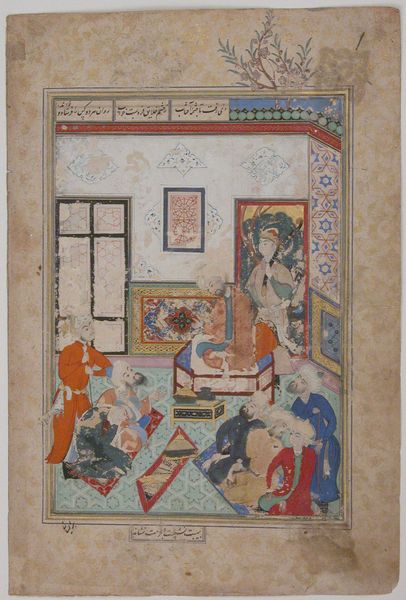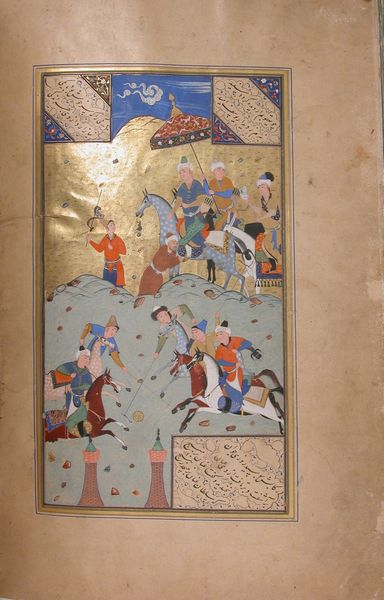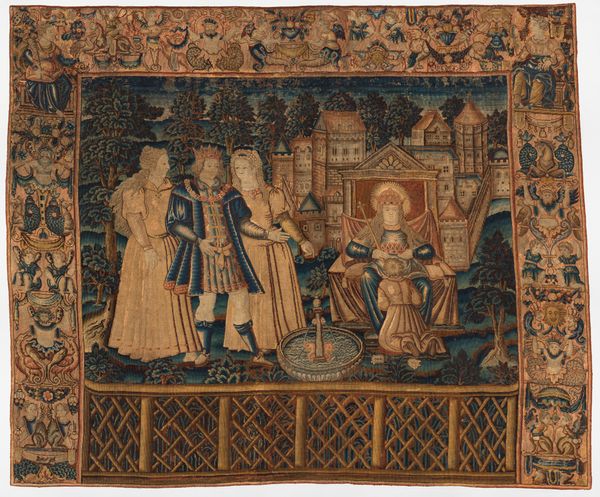
"Zahhak Brought as a Prisoner before Faridun", Folio from a Shahnama (Book of Kings) 1475 - 1499
0:00
0:00
painting, watercolor
#
water colours
#
narrative-art
#
painting
#
figuration
#
watercolor
#
islamic-art
#
history-painting
#
miniature
Dimensions: H. 5 1/4 in. (13.3 cm) W. 5 3/4 in. (14.6 cm)
Copyright: Public Domain
Editor: This miniature painting, titled "Zahhak Brought as a Prisoner before Faridun," dates from the late 15th century. It's created with watercolors and gold on paper and comes from the Shahnama, the Book of Kings. The figures appear tightly compressed into this architectural space and convey an odd mix of formality and tension. How might we approach an interpretation through a purely formal lens? Curator: Precisely. The compressed space immediately directs our attention to the arrangement of figures. Observe the dynamic between the static figure of Faridun enthroned versus the bound Zahhak presented before him. Note how the painter employs a high horizon line, almost flattening the pictorial space and forcing our focus onto the intricate surface patterns. Editor: I see what you mean about the flattening. It's almost like a stage set, where the figures are performing. The color palette too contributes to the sense of almost theatrical artificiality. The use of red and gold really emphasizes their contrasting importance and status, doesn’t it? Curator: Yes, consider also how the lines of the architecture draw the eye towards Faridun's face, the implied source of power and judgement. How does the composition as a whole contribute to the narrative, without us even knowing the specifics of the story? The placement of each individual serves to augment the narrative's hierarchical dynamics, reinforcing its implied moral framework. The patterns in the tiled wall seem to confine the scene, suggesting inexorable destiny. Editor: It is fascinating to consider the ways the structure of the artwork mirrors the power dynamics on display in the narrative. I now realize I was focusing more on subject, which can detract from visual expression. Curator: Precisely. Recognizing how the artist uses space, line, and color helps us to move beyond a simple reading of subject and toward a deeper appreciation for the choices made and their aesthetic impact. The formal aspects support its implicit narrative with geometric clarity and calculated precision.
Comments
No comments
Be the first to comment and join the conversation on the ultimate creative platform.
